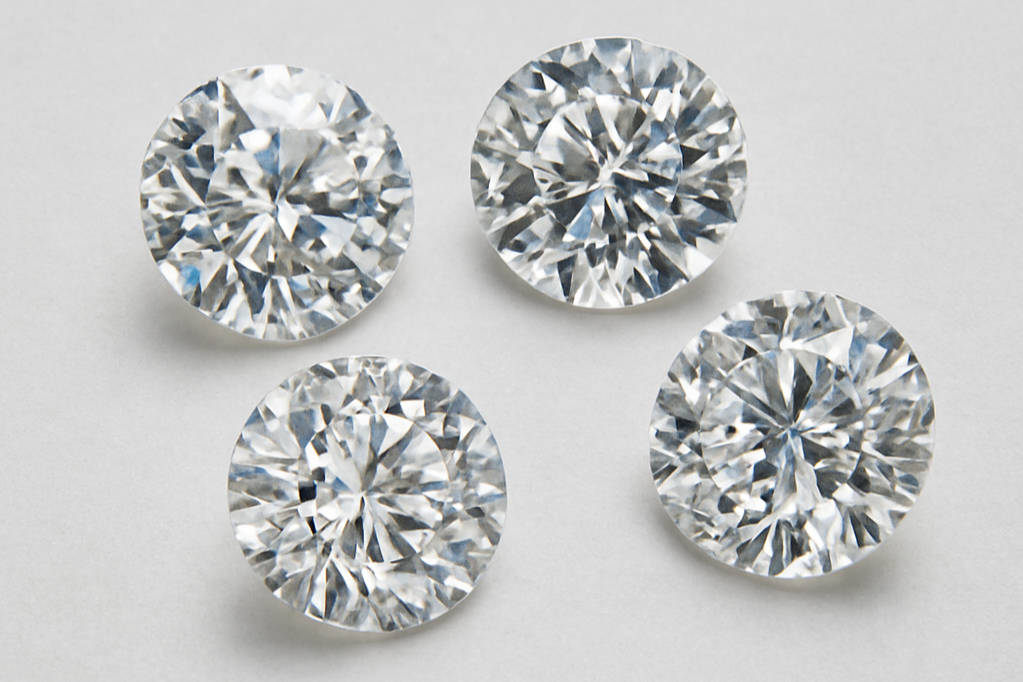Diamonds are whatever: How lab-grown gems are rewriting luxury
The diamond business is cracking—not just metaphorically, but economically. A gemstone once sold as a timeless store of value is now being remade in laboratories. The result isn’t imitation; it’s disruption.
Lab-grown diamonds—chemically identical to mined stones—are upsetting decades of scarcity-based marketing and reshaping how consumers, especially younger ones, define luxury.
Globally, the shift is accelerating. The lab-grown diamond market was valued at US$29.7 billion in 2025, according to Precedence Research, and is projected to more than triple by 2032. Laboratory stones already account for roughly 20% of all diamonds sold worldwide, the Gemological Institute of America (GIA) estimates, and in the United States, they represent more than half of engagement rings sold.
The economics are as dramatic as the technology. Mid-2025 data show that a one-carat lab diamond sells for about 83% less than a natural one of similar quality. That price collapse has turned rarity—the traditional anchor of luxury—into a liability. Supply is abundant, and exclusivity is no longer guaranteed.
The Philippines is not immune to this quiet revolution. The local lab-grown diamond market was estimated at US$130 million in 2024, with forecasts of roughly 7% annual growth through 2030. Jewelers such as Lucce now showcase lab-grown engagement rings beside natural stones, marketed as ethical, sustainable, and practical. A one-carat VS-clarity lab diamond ring can cost around ₱200,000—proof that “affordable” still counts as luxury.
But the rise of the lab-grown market forces the jewelry industry to confront uncomfortable questions about what makes a diamond valuable. Is it the story of its creation—or simply its form?
Even grading systems are being rewritten. For decades, the 4Cs—cut, color, clarity, and carat—have been the universal language of diamond quality. Earlier this year, the GIA announced it would discontinue the 4C system for lab-grown diamonds, replacing it with simplified “standard” and “premium” grades. Critics say it dilutes transparency; supporters argue it reflects the consistency of laboratory output. The International Gemological Institute (IGI) disagreed, pledging to maintain the 4C grading system for lab stones. “I call a spade a spade,” its CEO told The New York Times. The debate exposes the heart of the issue: when science perfects scarcity, the meaning of “value” becomes negotiable.
Legacy giants are feeling the pressure. De Beers—once the gatekeeper of global diamond supply—launched its lab-grown brand Lightbox in 2018 to stay ahead of the curve. But in May 2025, the company shut down Lightbox after prices for synthetic stones collapsed beyond profitability. Parent firm Anglo American subsequently wrote down De Beers’ valuation by nearly US$2.9 billion, citing persistent weakness in demand. For an industry built on control, this is a moment of reckoning.
Still, luxury thrives on narrative, not just economics. Natural diamonds may shrink into a niche, but they will likely become even more exclusive—marketed as geological art forms rather than commodities. Meanwhile, lab-grown stones are giving rise to a new democratized aesthetic: “diamonds for all,” as Pandora calls its latest line.
For many consumers, especially millennials and Gen Z, ethics and sustainability outweigh the romance of geology. The diamond industry has long struggled with its association with “blood diamonds,” used to finance conflicts in Africa. Lab-grown gems offer a cleaner narrative—no mining, no conflict, and a smaller carbon footprint. In a country like the Philippines, where eco-consciousness is rising alongside disposable income, this ethical edge resonates.
But the revolution carries a paradox. Perfection is easy to mass-produce; desire is not. As lab diamonds reach industrial scale, imperfections—color tints, natural inclusions—may once again define premium. In that sense, the “flaw” becomes the new luxury. Some high-end buyers may even migrate back to natural stones precisely because they are unpredictable, unrepeatable, and humanly romantic.
Resale value poses another test. Pawnshops and resellers in Manila often treat lab diamonds as fashion jewelry rather than investments. One local investor on Reddit lamented that his mother’s two-carat lab diamond “had zero resale liquidity.” The secondary market remains thin, which makes lab stones appealing for wear, not wealth preservation.
For Filipino jewelers, the opportunity lies in branding. The technology is global, but storytelling can be local. A lab-grown diamond ring inspired by the banig weave or sampaguita motif could fuse ethical modernity with cultural design. Craftsmanship and emotional resonance, not geological origin, will decide who wins this market.
If the 20th-century diamond dream was built on the idea that “a diamond is forever,” the 21st-century version might be that “a diamond is for everyone.” The sparkle remains—but its meaning is shifting.
Lab-grown diamonds won’t end luxury. They will force it to evolve. And as the Philippine market joins this transformation, the smartest brands will be those that can balance ethics with emotion, technology with tradition. In the end, the real revolution isn’t chemical. It’s cultural.



0 Comment